Top 20 Crops to Grow in Summer: A Comprehensive Gardener’s Guide
- April 15, 2024
- 0 comment
Discover the top 20 crops perfect for summer cultivation. This guide offers expert tips to enhance yield and beautify your garden effectively! Explore the 20 Ideal Crops to Plant This Summer. As temperatures rise, choosing the right crops for your garden becomes crucial for any gardener, novice or experienced alike.
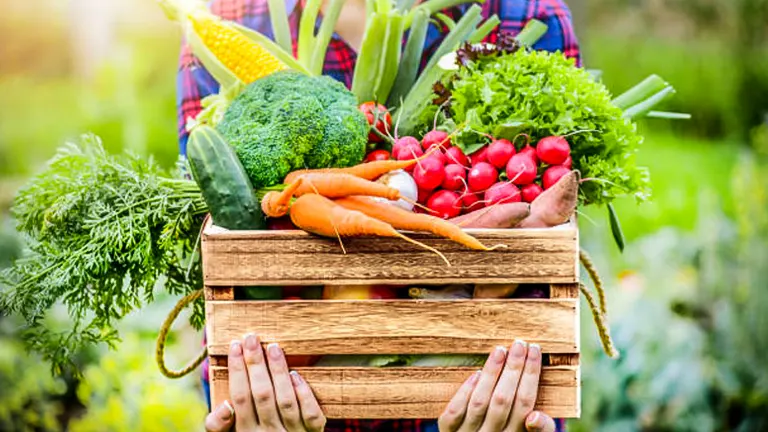
This guide provides you with a list of perfect summer crops, from succulent tomatoes to vibrant bell peppers, each selected for their productivity, flavor, and ease of care. Along with essential cultivation tips, we’ll help you maximize your garden’s potential and beauty. Dive into the season with confidence and watch your garden thrive with these top picks for summer planting.
List of Top 20 Crops to Grow in Summer
- Lettuce
- Carrots
- Radishes
- Swiss Chard
- Beets
- Tomatoes
- Peppers
- Cucumbers
- Zucchini
- Green Beans
- Summer Squash
- Winter Squash
- Pumpkins
- Watermelons
- Cantaloupes
- Basil
- Cilantro
- Mint
- Oregano
- Thyme
Understanding Your Climate

- Heat and Light: Summer conditions are characterized by intense heat and prolonged periods of sunlight. While the crops recommended in this guide are selected for their resilience in these conditions, it’s crucial to adapt to local specifics. Temperature fluctuations, such as unexpected mid-season heat waves or cool spells, can impact plant health and productivity. Consider installing protective coverings like shade cloths during extreme heat and utilizing row covers to shield plants from cool nights.
- Rainfall: Summer rain can be unpredictable, ranging from scarce to heavy downpours. Gauge the typical rainfall in your area to adjust your watering schedule accordingly. For areas with low summer rainfall, consider setting up drip irrigation systems to maintain consistent soil moisture. In contrast, in regions with intense rain sessions, ensure adequate drainage to prevent root diseases.
Soil Preparation
- Nutrient Management: Enriching your soil with organic matter such as compost, well-rotted manure, or worm castings is crucial for replenishing nutrients that are rapidly depleted in summer. These amendments improve soil fertility and structure, supporting robust plant growth. Additionally, consider testing your soil’s nutrient profile early in the season to tailor your fertilization practices specifically to your crops’ needs.
- Drainage: Proper drainage is critical to prevent waterlogging, which is particularly detrimental during periods of heavy rain. Enhance soil structure by incorporating gritty materials like perlite, coarse sand, or even small gravel, especially if your garden has clay-heavy soil. Regular aeration helps improve water flow and root penetration. For container gardens, ensure that your pots have holes at the bottom to allow excess water to escape.
Choosing the Right Location
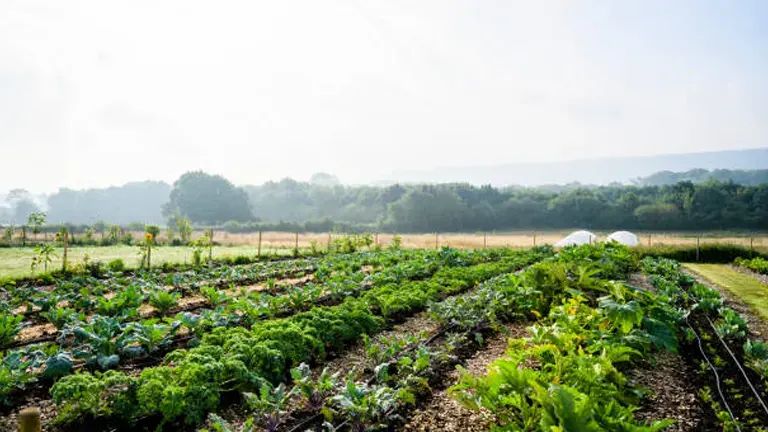
Sun Exposure: Most summer crops require full sun, defined as at least 6-8 hours of direct sunlight daily. Position your garden beds to maximize exposure to the sun, ideally in a south-facing location. If necessary, prune surrounding foliage to ensure adequate light, which is essential for fruiting and reducing the prevalence of fungal diseases.
Air Flow: Good air circulation is essential to minimize the risks of fungal infections and other airborne diseases. Avoid overcrowding plants to ensure that air can freely circulate around the leaves, which also helps the foliage dry quickly after rainfall. If planting in rows, orient them in the direction of prevailing winds, or consider installing a small fan in greenhouse structures to enhance airflow.
Microclimate Considerations: Understand the microclimate of your garden space. Areas against a south-facing wall may have higher temperatures due to reflected heat, which can be advantageous for heat-loving tomatoes and peppers but detrimental for cool-season crops like lettuce. Utilize naturally occurring shade or create it with structures to protect sensitive crops.
Topography and Accessibility: Pay attention to the topography of your planting site. Sloped areas may face issues with erosion and can be drier at the top. These areas may benefit from terracing or deeper mulching practices to optimize conditions for plant growth. Additionally, ensure your garden is easily accessible for regular maintenance, harvesting, and monitoring plant health.
Leafy Greens and Root Vegetables
These crops are not only easy to grow but also quick to harvest, providing continuous produce throughout the summer.
1. Lettuce
Lettuce is a staple in summer gardens due to its quick growth cycle and adaptability to various climates, which allows for successive sowings throughout the season. It thrives in cooler temperatures, but varieties such as Romaine and Butterhead can withstand summer heat, especially when grown in shaded areas which mimic the cool, mild conditions they prefer. This versatility makes lettuce a rewarding crop for continuous harvesting.
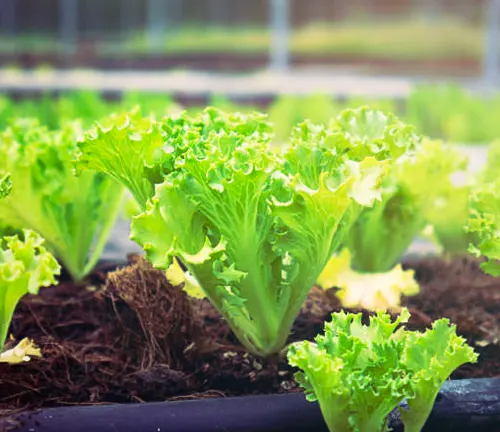
- Planting Time: Early spring through late summer in cooler areas, or in shaded areas where temperatures are more controlled.
- Growing Conditions: Prefers rich, well-drained soil with a steady supply of moisture to avoid bitterness in the leaves.
- Care Tips: Water regularly to maintain even soil moisture; use mulch to retain moisture and suppress weeds without the need for chemical herbicides.
- Harvest Tips: Harvest outer leaves first to allow the center leaves to continue growing, providing yields all season long.
2. Carrots
Carrots are favored in many gardens for their nutrient content and preference for cooler underground conditions. Their ability to grow under a mulch cover makes them ideal for summer cultivation, as the mulch helps regulate soil temperature and moisture levels. Carrots are a versatile crop that can be harvested at various stages of growth depending on the desired size and sweetness.
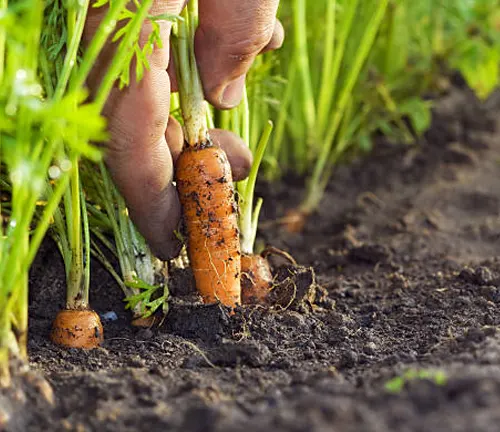
- Planting Time: From late spring as the frost ends, through mid-summer.
- Growing Conditions: Favors sandy, loose soil with a pH of 6.0-6.8; deep soil free of stones is essential for straight roots.
- Care Tips: Thin seedlings to about 3 inches apart; deep watering helps develop strong roots and prevents the soil from crusting.
- Harvest Tips: Harvest when bright and firm; typical maturity occurs in 50-75 days. Younger carrots are generally sweeter and more tender.
3. Radishes
Radishes are a great choice for quick yields, often ready to harvest just three to four weeks after planting. They are an excellent catch crop, fitting in between other plants in the garden. Radishes prefer cooler weather but can tolerate the high temperatures of summer if provided enough water to keep the ground moist.

- Planting Time: Successively every two weeks for a continuous crop, starting in early spring.
- Growing Conditions: Needs fertile, well-drained soil with ample sunlight.
- Care Tips: Keep soil moist; radishes are fast growers and should be checked often to prevent overgrowth which can lead to tough and woody roots.
- Harvest Tips: Pull them out of the ground when roots are just under an inch in diameter for best texture and flavor.
4. Swiss Chard
Swiss chard is a durable and colorful leafy green that thrives in summer conditions. It can be harvested throughout the season, from early spring to late summer. The plant is heat tolerant and can be grown in both mild and harsh summer climates, making it a versatile choice for any garden.
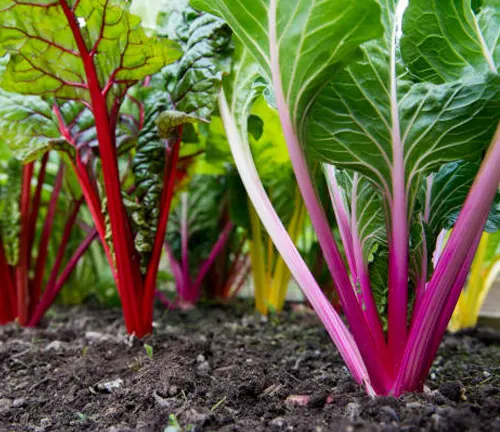
- Planting Time: Plant from early spring to late summer; tolerates light frost.
- Growing Conditions: Performs best in full sun and well-drained soil but will tolerate partial shade.
- Care Tips: Water regularly, especially in periods of drought; chard needs a lot of moisture to develop tender leaves.
- Harvest Tips: Harvest outer leaves first, allowing younger leaves to mature for later use; continuous picking encourages the plant to produce new growth.
5. Beets
Beets are a fantastic dual-purpose crop, as both the leaves and roots can be eaten. They prefer cooler soil which makes them suitable for early summer planting. The roots develop best in light, well-draining soil, and can be left in the ground until needed, making them a practical and low-maintenance choice.
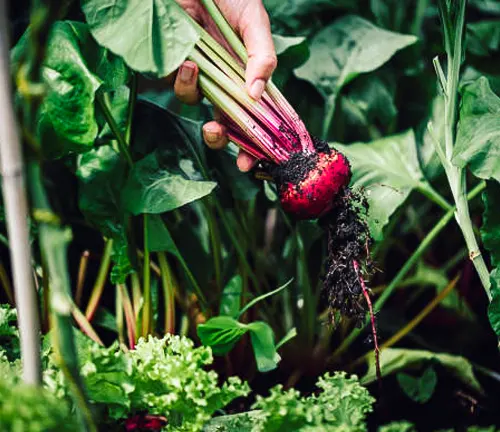
- Planting Time: As early as the soil can be worked until mid-summer.
- Growing Conditions: Requires well-drained soil rich in organic matter. Lighter soils are preferable for easy root expansion.
- Care Tips: Thin young beet plants to allow robust root development; avoid high nitrogen fertilizers which can promote leaf growth at the expense of the root.
- Harvest Tips: Beets are ready when they are about the size of a golf ball to a tennis ball. Leaving them to grow bigger can result in woody textures.
Fruit-Bearing Plants and Legumes
6. Tomatoes
Tomatoes are a cornerstone of the summer garden, cherished for their variety and the robust flavor they offer fresh off the vine. They require warm soil and consistent care, thriving under the summer sun. Tomatoes are susceptible to a few diseases like blossom end rot, which proper watering habits can mitigate, making them slightly more labor-intensive but incredibly rewarding to cultivate.

- Planting Time: After the last frost when the soil has warmed.
- Growing Conditions: Thrive in rich, well-draining soil with a pH of 6.2 to 6.8.
- Care Tips: Support plants with stakes or cages to help bear the weight of the fruit. Water deeply and consistently to prevent blossom end rot.
- Harvest Tips: Harvest when tomatoes are firm and fully colored. Regular picking encourages more fruit production.
7. Peppers
Peppers are highly versatile and can be grown in various climates, though they prefer the warmth of summer. From sweet bell peppers to fiery hot varieties, they add a splash of color and range of flavors to dishes. Peppers also contain vitamins A and C, making them a healthy as well as a flavorful addition to any garden.
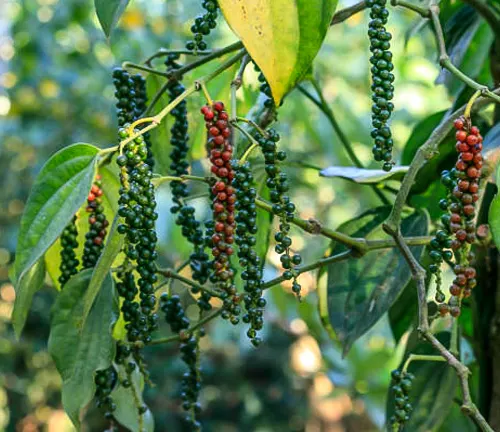
- Planting Time: Plant outdoors in late spring or early summer, once nighttime temperatures consistently stay above 55°F.
- Growing Conditions: Prefer warm conditions and full sun.
- Care Tips: Like tomatoes, peppers need deep, regular watering and well-drained soil. Mulch to retain moisture and control weeds.
- Harvest Tips: Harvest when they reach the desired size and color; green peppers can be picked early or left to ripen into red, yellow, or orange.
8. Cucumbers
Cucumbers are fast growers that offer a crisp, refreshing taste, particularly welcome on hot summer days. They require a good deal of space for their vines, or adequate support if grown vertically, and benefit from consistent moisture and cool soil temperatures beneath mulch.
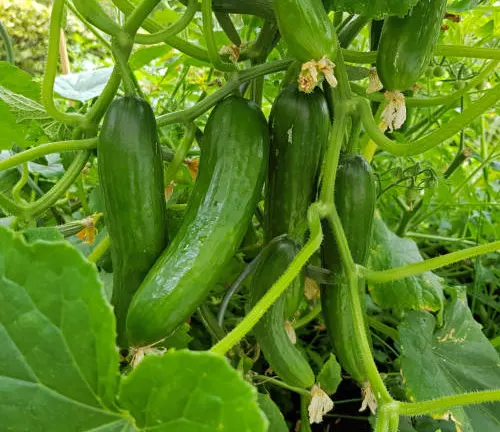
- Planting Time: After the last frost to avoid cold damage.
- Growing Conditions: Require full sun and plenty of space or support for climbing.
- Care Tips: Keep soil consistently moist. Use mulch to help maintain soil moisture and cool roots.
- Harvest Tips: Harvest when firm and bright green. Overripe cucumbers can become bitter.
9. Zucchini
Zucchini is another summer garden favorite, yielding prolifically and growing almost visibly in ideal conditions. It is best harvested at a small to medium size for the best texture and flavor, often before its skin hardens and seeds mature.
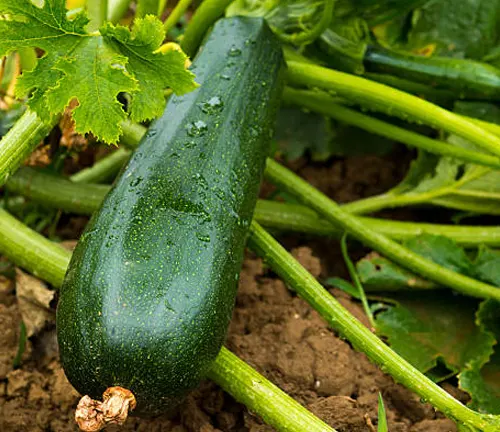
- Planting Time: Plant in the ground in late spring, after the last frost.
- Growing Conditions: Needs fertile, well-drained soil and a sunny spot.
- Care Tips: Water regularly, especially once the plant starts flowering and fruiting.
- Harvest Tips: Harvest young fruits regularly to encourage more production.
10. Green Beans
Green beans are simple to grow and make for a delightful addition to any summer meal. They are best picked young and tender for the best flavor. They can be grown on a trellis to save space and ease the harvesting process.
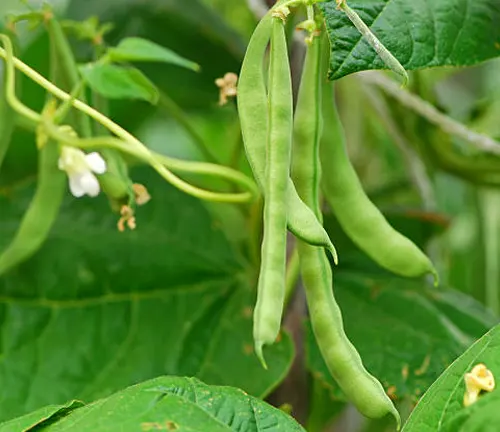
- Planting Time: After the last frost when the soil is warm.
- Growing Conditions: Requires full sun and moist, well-drained soil.
- Care Tips: Water regularly, particularly when the plants are flowering and developing pods.
- Harvest Tips: Pick when the pods are firm and can be snapped easily but before you can see the seeds bulging.
Squashes and Melons
11. Summer Squash
Summer squash, including varieties like zucchini, yellow squash, and pattypan, are essential for any summer garden due to their rapid growth and high yield. These plants prefer warm conditions and can produce multiple harvests from the same plant, making them highly productive over the season.
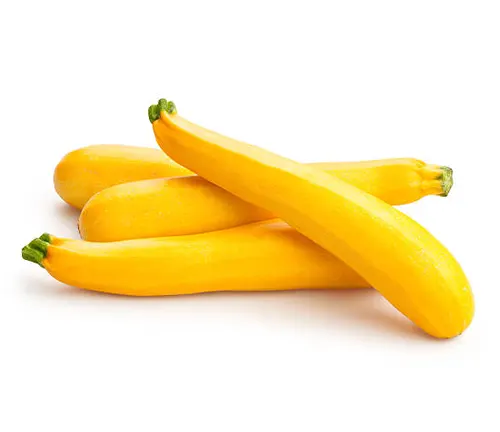
- Planting Time: After the last frost to ensure warm soil, typically in late spring.
- Growing Conditions: Thrive in full sun and need rich, well-drained soil.
- Care Tips: Mulch to retain soil moisture. Water regularly, especially during fruit development.
- Harvest Tips: Harvest regularly to encourage continuous production. Squashes should be picked when young and tender.
12. Winter Squash
Winter squash varieties like butternut, acorn, and spaghetti squash are grown for their ability to store well through the winter, providing a nutritious food source long after harvest. These squashes require a longer growing period and benefit from the warm summer sun to develop their thick skins that improve storage potential.
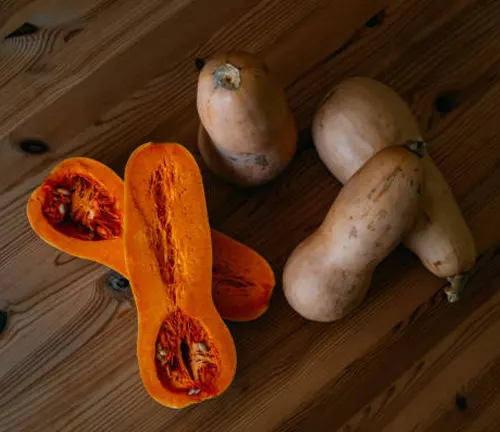
- Planting Time: Plant in late spring, after the last frost.
- Growing Conditions: Requires full sun and a good amount of space as vines spread out.
- Care Tips: Use mulch to help maintain an even soil moisture level and suppress weeds.
- Harvest Tips: Harvest once the rind is hard and the squash has turned a deep, solid color. Leave a few inches of stem attached.
13. Pumpkins
Pumpkins are a beloved fall staple that are as fun to grow as they are to use for decorations and cooking. These vines need plenty of space and warmer temperatures to flourish, producing everything from small, sweet varieties perfect for pies to large types ideal for carving.
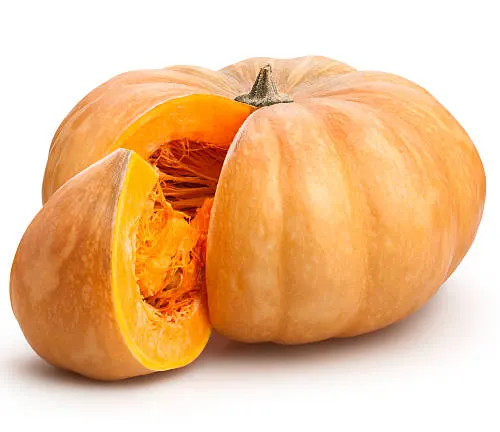
- Planting Time: Late spring in most regions to ensure they mature by Halloween.
- Growing Conditions: Need a sunny position and plenty of space for sprawling vines.
- Care Tips: Water thoroughly, especially during dry spells. Pumpkins are heavy feeders, so use a high-nutrient fertilizer.
- Harvest Tips: Ready when they are a deep, solid color and the skin is hard. The stem should also be dry and corky.
14. Watermelons
Watermelons are the quintessential summer fruit, offering a refreshing and hydrating treat during the hottest months. They need a long growing season and plenty of space to sprawl, making them perfect for large, sunny gardens.
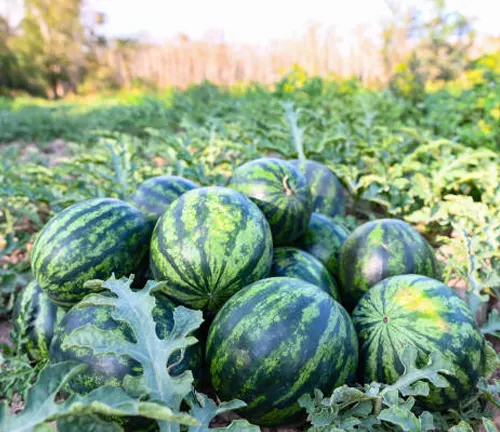
- Planting Time: Plant seeds directly into the ground in late spring.
- Growing Conditions: Require full sun, warmth, and a long growing season.
- Care Tips: Keep soil moist but not waterlogged. Watermelons have deep roots which benefit from deep watering.
- Harvest Tips: Tap the melon; it sounds hollow when ripe. Look for the underside turning from white to yellow.
15. Cantaloupes
Cantaloupes, with their sweet and musky flesh, are a popular melon to grow in home gardens. They thrive under the same conditions as watermelons but require less space, making them suitable for smaller gardens.
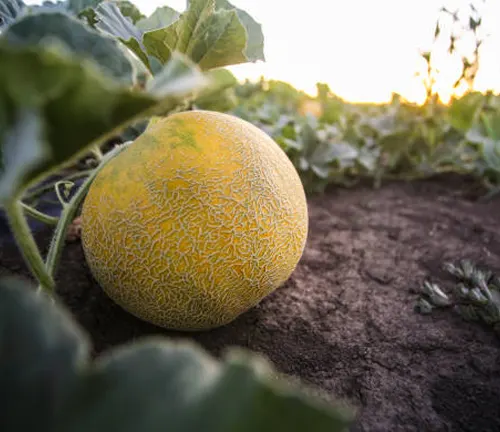
- Planting Time: After the last spring frost when the soil is warm.
- Growing Conditions: Need full sun and well-drained soil.
- Care Tips: Use mulch to keep the soil warm and moist. Provide ample space between plants for air circulation.
- Harvest Tips: Ripe when the melon detaches easily from the vine and the exterior netting becomes more pronounced.
Essential Herbs and Spices
16. Basil
Basil is a warm-weather favorite that thrives in the summer sun. It’s popular for its aromatic leaves which are used in a variety of dishes, particularly in Italian cuisine. Basil needs warm conditions to grow and can be used continuously throughout the season.
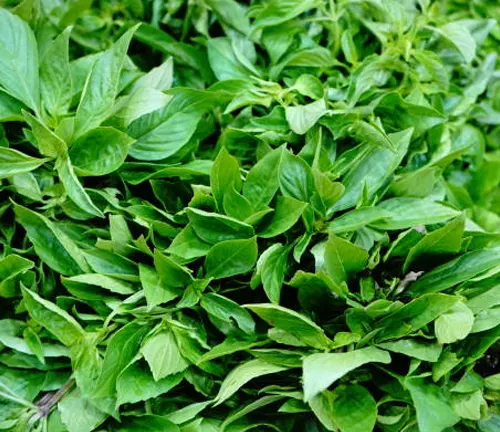
- Planting Time: Plant seedlings after the last frost when the soil has warmed.
- Growing Conditions: Thrives in hot weather and requires full sun; well-drained, fertile soil is best.
- Care Tips: Water regularly, but ensure the soil drains well to avoid soggy conditions. Pinch off flowering tops to encourage bushier growth.
- Harvest Tips: Harvest leaves as needed by snipping off the tops of the branches. Frequent harvesting encourages the plant to become fuller.
17. Cilantro
Cilantro is an essential herb for culinary uses, giving a fresh burst of flavor to dishes. It grows quickly in the cooler parts of summer and can bolt to seed if temperatures get too high, which is why partial shade can be beneficial.
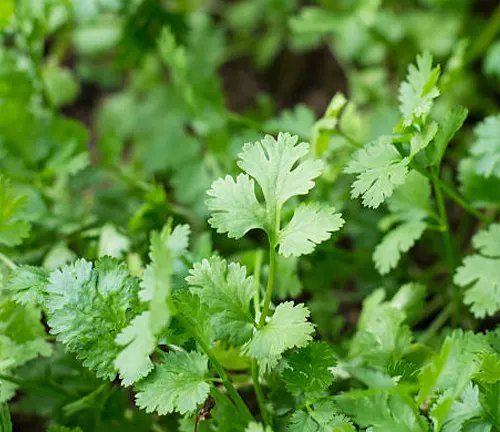
- Planting Time: Sow seeds in the late spring or early summer.
- Growing Conditions: Prefers cool conditions but can be planted in partial shade for summer growing to slow bolting.
- Care Tips: Keep the soil moist and mulch around the plants to help stabilize temperature and moisture levels.
- Harvest Tips: Continuously harvest leaves to encourage new growth; once seeds develop, they can be harvested for coriander.
18. Mint
Mint is known for its vigorous growth and invasive nature, making it ideal for container gardening. It offers a refreshing flavor and is used in many dishes and drinks, from teas to mojitos.
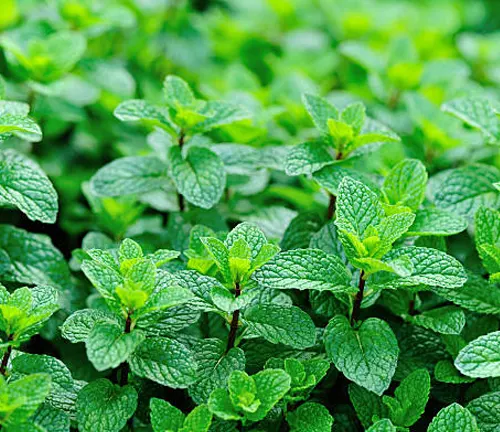
- Planting Time: Early spring or late spring for a summer harvest.
- Growing Conditions: Can tolerate a range of conditions but prefers partial shade with moist, rich soil.
- Care Tips: Mint can be invasive; consider planting it in containers to control its spread. Keep the soil moist.
- Harvest Tips: Pick leaves as needed. Regular harvesting encourages continuous production.
19. Oregano
Oregano is a robust herb that forms an integral part of Mediterranean cooking. It is particularly favored for its pungent, spicy flavor, which enhances various dishes, including pizzas and pastas.
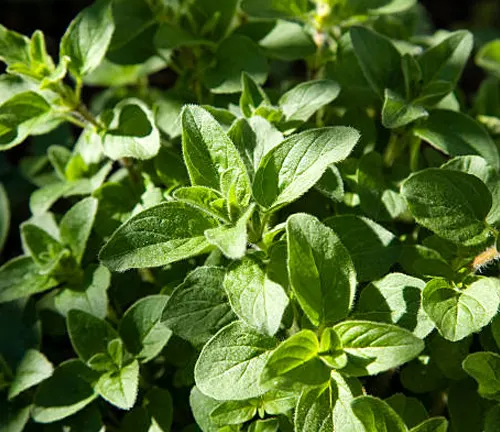
- Planting Time: After the last frost when the ground has warmed.
- Growing Conditions: Prefers full sun and well-drained soil.
- Care Tips: Water when the soil feels dry to the touch. Prune regularly to prevent the plant from becoming leggy.
- Harvest Tips: Harvest sprigs as needed, cutting back to just above a set of leaves to encourage fuller growth.
20. Thyme
Thyme is a durable, perennial herb that enjoys full sun and well-drained soil. It is used for its aromatic leaves in a variety of culinary recipes and is also appreciated for its ornamental qualities.
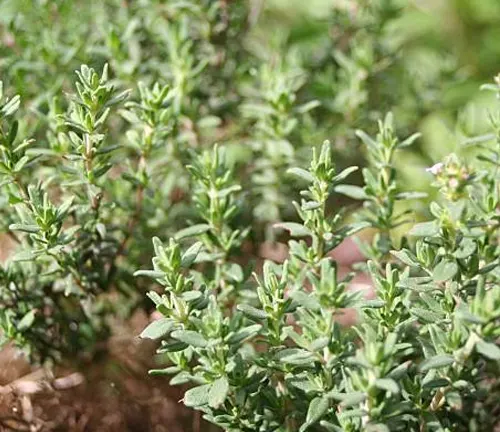
- Planting Time: Plant seedlings or small plants just after the last frost.
- Growing Conditions: Thrives in full sun and prefers well-drained soil. It tolerates dry, rocky soil and is a perfect choice for xeriscapes.
- Care Tips: Water thoroughly but infrequently, allowing the soil to dry out between waterings.
- Harvest Tips: Harvest thyme just before the plant flowers by cutting off the top five to six inches of growth. Frequent trimming helps maintain a compact, bushy shape.
Harvesting Tips
Harvesting at the right time is crucial to get the best flavor and longest shelf-life from your summer crops:
- Tomatoes: Pick when the fruit is uniformly colored and slightly soft to the touch.
- Peppers: Snip with scissors or a sharp knife, leaving a short stub of stem on the fruit.
- Cucumbers: Cut from the vine before they turn yellow and seeds become hard.
- Zucchini and Squash: Harvest when young and tender for the best taste and texture.
- Leafy Greens (Lettuce, Spinach): Pick leaves from the outside to allow the plant to continue growing.
- Root Vegetables (Carrots, Beets, Radishes): Pull gently from the soil when the soil feels loose around the plant.
Storage Tips
Proper storage is essential to extending the freshness of your produce:
- Tomatoes: Store at room temperature away from direct sunlight to extend freshness.
- Leafy Greens: Wrap in a damp paper towel and store in the crisper drawer of your refrigerator.
- Root Vegetables: Remove tops, clean off soil, and store in a cool, dark place.
- Cucumbers, Zucchinis, and Peppers: Store in the refrigerator in a plastic bag.
- Herbs: Trim stems, place in a jar of water like a bouquet, and cover with a plastic bag in the refrigerator.
Related Post
- How to Fertilize a Mango Tree Effectively: Tips and Tricks for Healthy Growth
- How to Fertilize Apple Trees: Essential Tips for a Bountiful Harvest
- How to Fertilize Lemon Trees: Secrets for Thriving Citrus
- How to Fertilize Avocado Tree: A Step-by-Step Guide for Lush Growth
Conclusion
Successfully growing the top 20 summer crops involves careful planning and attention to detail. Understanding your local climate conditions, preparing the soil properly, and selecting the right location for each plant are foundational steps that can not be overlooked. By following the detailed planting and care instructions provided for each crop, you will optimize your garden’s productivity and enjoy a diverse harvest throughout the season.
Remember, the key to a thriving garden is not just the initial setup but ongoing care. Regularly check your plants for signs of pests, diseases, or nutritional deficiencies. Adjust your watering, feeding, and care techniques based on the plants’ growth stages and the prevailing weather conditions.
FAQs
- What are the best conditions for growing tomatoes and peppers in the summer?
Tomatoes and peppers thrive in warm conditions with full sun. They prefer well-drained, fertile soil with a pH of 6.2 to 6.8. Ensure consistent moisture by watering deeply a few times a week rather than a little every day, and use mulch to retain soil moisture and control temperature. - How can I prevent my lettuce from bolting in the heat of summer?
To prevent lettuce from bolting, choose heat-tolerant varieties such as Romaine or Crisphead. Plant in partial shade or use a shade cloth to reduce heat stress. Keeping the soil consistently moist and mulching can also help to keep the roots cool. - When is the best time to harvest cucumbers, and how can I tell they are ready?
Cucumbers are best harvested before they become too large or start to yellow. The ideal size is typically about 6 to 8 inches long for slicing varieties. They should be firm and dark green. Regular harvesting encourages the plant to produce more fruit. - Can I grow zucchini and summer squash in the same garden bed?
Yes, zucchini and summer squash can be grown in the same bed as they have similar growing requirements. Ensure they have enough space, as both plants can spread widely and need plenty of sunlight and well-drained soil. - What are some tips for growing watermelons for a successful harvest?
For watermelons, use a warm, sunny spot with plenty of space to sprawl. Plant seeds directly into the ground in late spring. Watermelons have deep roots and require deep watering; however, avoid waterlogging. Place a straw or wood board under growing melons to keep them off the moist soil and prevent rot. - How do I control pests naturally in my vegetable garden?
To control pests naturally, encourage beneficial insects like ladybugs, which eat aphids. Use floating row covers to protect crops from insects. Neem oil and insecticidal soaps can help reduce pest populations without harmful chemicals. Regularly inspect plants and remove any pests by hand if necessary. - What is the best way to store freshly harvested root vegetables like carrots and beets?
For root vegetables, remove the tops then store in a cool, humid place like a root cellar. If you don’t have a root cellar, store them in the crisper drawer of your refrigerator wrapped in a damp cloth or in a container filled with moist sand to keep them fresh. - How often should I water my herb garden in the summer?
Herbs generally need about 1 inch of water per week, either from rainfall or manual watering. During hot, dry spells, water herbs deeply once or twice a week to encourage deep root growth. Overwatering can cause herbs to become less flavorful, so allow the soil to dry out between waterings.
With the right crops and care, your summer garden will flourish. This guide provides all you need to get started. Enjoy the vibrant flavors and lush growth that these top 20 crops bring to your garden!

Benjamin Brooks
Forestry AuthorGreetings! I'm Benjamin Brooks, and my journey over the past 15 years has revolved around the fascinating realms of content creation, expertise in snow clearing, and the intricate world of lumberjacking and landscaping. What began as a simple curiosity about the natural world and heavy machinery has evolved into a passionate profession where my love for crafting words intertwines seamlessly with my lumberjacking and garden skills.










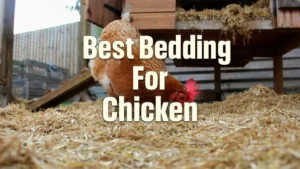
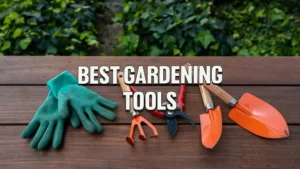

Leave your comment